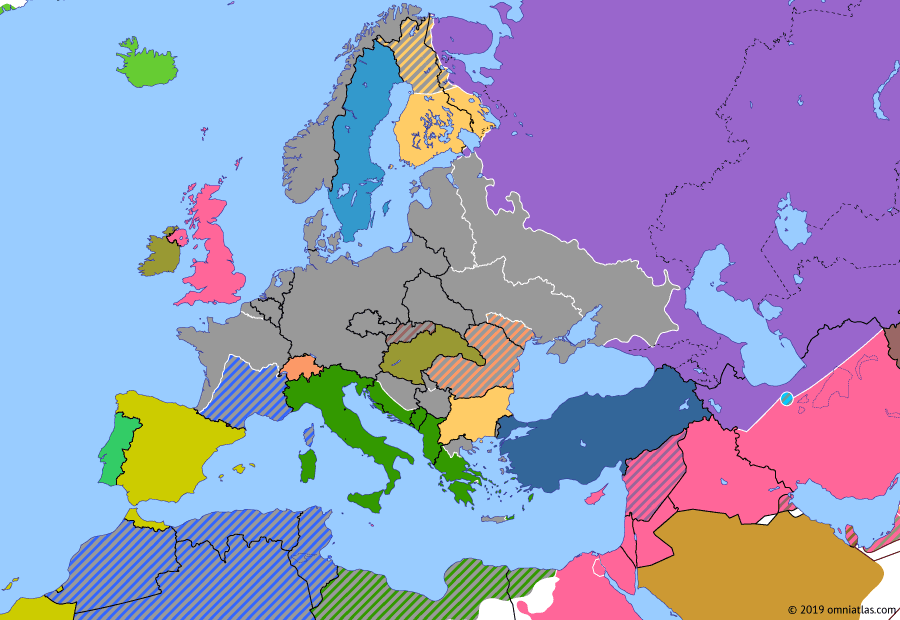Europe 1942: Case Blue

16 September 1942
16 Sep 1942
World War II: Blitzkrieg
-27–68 Julio-Claudian Dynasty
68–96 Flavian Dynasty
96–192 Nerva–Antonine Dynasty
192–235 Severan Dynasty
235–268 Crisis of the Third Century: Turmoil
268–284 Crisis of the Third Century: Restoration
284–311 Diocletian and the Tetrarchy
311–363 Constantinian Dynasty
363–383 Valentinianic Dynasty
383–408 Theodosian Dynasty: Divided Empire
408–425 Theodosian Dynasty: The West Besieged
425–441 Theodosian Dynasty: Fall of Africa
441–457 Theodosian Dynasty: Hunnic Wars
457–1803 NO MAPS FOR THIS PERIOD YET
1803–1814 Napoleonic Wars
1814–1815 Vienna and Waterloo
1815–1848 Congress Europe
1848–1850 Springtime of Peoples
1850–1859 Crimean War
1859–1862 Italian Unification
1862–1871 German Unification
1871–1914 Imperial Europe
1914–1918 Great War
1918–1922 Armistice Europe
1922–1939 Rise of Fascism
1939–1942 World War II: Blitzkrieg
1942–1945 World War II: Fall of the Third Reich
1945–1990 Cold War
1990–2010 Post-Cold War Europe
2010–pres Crisis of Europe
Case Blue
16 Sep 1939 Invasion of Poland
11 Mar 1940 Winter War
21 Apr 1940 Invasion of Denmark and Norway
25 May 1940 Blitzkrieg in the West
21 Jun 1940 Fall of France
7 Sep 1940 Battle of Britain
3 Nov 1940 Mussolini’s Offensives
26 Feb 1941 Italian Fiascos
16 Apr 1941 Germany in the Mediterranean
21 Jun 1941 Eve of Barbarossa
31 Aug 1941 Operation Barbarossa
4 Dec 1941 Battle of Moscow
20 Jan 1942 The War Expands
27 Jun 1942 Western Desert Campaign
16 Sep 1942 Case Blue
With the German bid to capture Moscow thwarted, Hitler turned his attention to the southeast. In the 1942 Summer Offensive, he attempted to seize the oil fields of southern Russia and the Caucasus. However after dramatic initial successes, the attack ground to a halt, both in the Caucasus foothills and at the strategic city of Stalingrad.